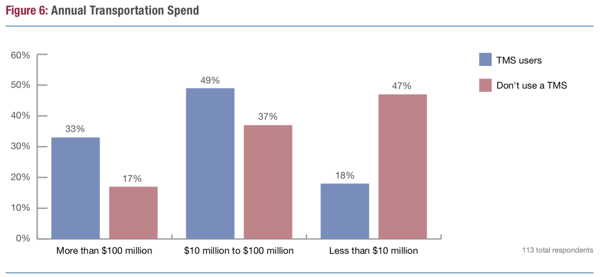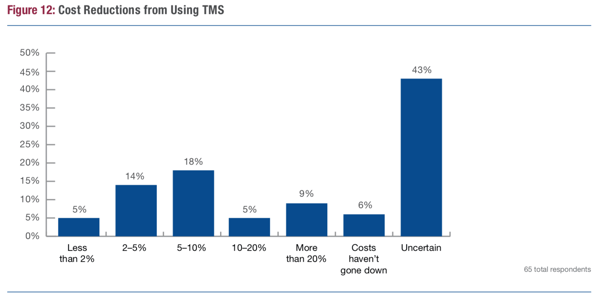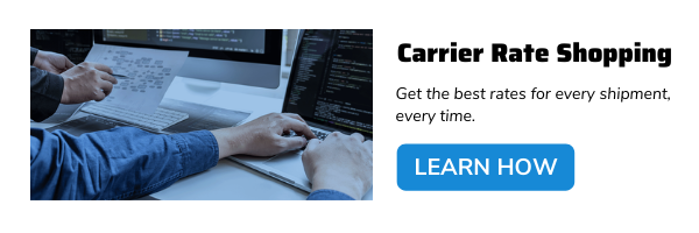Here are 4 Things Your TMS Must be Able to do for You
The transportation management system (TMS) marketplace is exploding. A report from Radiant Insights found that this sector will experience a more...

We’ve written about Transportation Management Systems before, so it should be no surprise that we will continue to evangelize that numerous benefits that a TMS can bring to your company. Distributors, manufacturers, and retailers will understand that shipping is a venture which will always require improvement.
In brief: a Transportation Management System (TMS) enables companies to move product to the destination cost effectively and efficiently. A good TMS will allow you to ship your freight across all modes and manage freight of any shape or size.
First of all, who is using TMS? The figure below breaks down TMS users and non-users by annual freight spend. Take note of the spend amounts since that will be valuable as we uncover savings percentages later on.

Graph taken from the American Shipper Global Transportation Management Benchmark Study, pg 10.
Now enough of my own jabbering, I’d like to share some information about why a TMS can be hugely beneficial to your company. First, TMS software has a proven return on investment.
From a 2016 American Shipper study, 32% of TMS users claimed to see at least a 5% reduction in cost which can directly be attributed to their TMS. It is worth knowing that 40% of participants in the study reported uncertain changes; that is, during their initial deployment - the respondents in the survey could not ascertain ROI increases or decreases. It is assumed that many participants in the survey are not privy to ROI numbers; the actual percentage of savings could be higher.

Graph taken from the American Shipper Global Transportation Management Benchmark Study, pg 15.
How to Find Carrier Invoice Discrepancies
In a 2011 ARC Survey, the average savings that participants saw after using a TMS was around 5-10% (this is an across industry/company size variable). Now, here’s the good news: an updated report in 2016 showed that the average freight savings increased to 8-10%. There is more to this number as well, since they include other factors which contribute to the ROI. Here’s a direct quote from the updated brief:
An often-overlooked part of the ROI, however, is the implementation process itself. Too many companies miss the mark on their implementations, from both a deadline standpoint as well as a functionality standpoint.
From our recent survey, only 27 percent of respondents that indicated timelines were met and the software was fully functional at go-live. These misses mean wasted time and money, which then makes it harder to see a positive ROI.
What’s the takeaway from that? In 2018, expect implementation of a TMS to be even better. As SaaS TMS companies continue to gain greater market traction – the speed of implementation will get even faster. There are two ways that implementation time can be helped.
The first, offer low barriers to cross so that users can get set-up and shipping ASAP. If you have your carrier account information handy, it is not unfathomable that one might get setup with a TMS in under a minute. The second method is to offer the services of a representative or account manage who can work with your company to get you set-up with a TMS; this is helpful for companies that require specific ERP integration or functionality out of a TMS.
Let’s pull back to see a Transportation management system’s effect on ROI, specifically focusing on freight spend. A TMS can influence this is many ways (invoice auditing, rate shopping, automation, etc.); but we think we’ve created a good formula to help us gain insight into potential savings. Learn more about how FreightPOP can reduce your freight spend.

The transportation management system (TMS) marketplace is exploding. A report from Radiant Insights found that this sector will experience a more...

TMS’s (Transportation Management System) are built to help with shipping and logistics, but this software doesn’t only just benefit shippers....

As demands increase right alongside the associated costs of shipping, transportation and logistics, American businesses are spending record-setting...